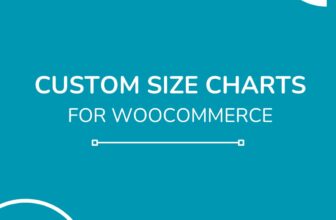
In executive search, finding candidates with the right skills and experience is crucial, but ensuring they fit well with your organization’s culture is equally important. Cultural fit influences long-term success, employee satisfaction, and overall organizational harmony. Here’s why cultural fit matters and how to get it right in the executive search process.
Why Cultural Fit Matters
- Enhanced Performance and Productivity
- Executives who align with the company culture are more likely to excel in their roles, driving productivity and performance. They understand and embody the organization’s values, leading to better decision-making and leadership.
- Increased Retention Rates
- Cultural fit reduces turnover by ensuring executives feel connected to the organization. When leaders resonate with the company’s ethos, they are more committed and less likely to seek opportunities elsewhere.
- Improved Team Dynamics
- Executives who fit well culturally foster positive team dynamics. They can build strong relationships, collaborate effectively, and inspire their teams, creating a harmonious and productive work environment.
- Brand Representation
- Leaders who embody the company’s culture effectively represent the brand to clients, partners, and stakeholders. They reinforce the brand’s values and vision, enhancing its reputation and market position.
How to Assess and Ensure Cultural Fit
- Define Your Company Culture
- Core Values: Clearly articulate your organization’s core values, mission, and vision. These should guide the behaviors and attitudes you expect from your leaders.
- Cultural Attributes: Identify specific cultural attributes that are important for the role. This could include leadership style, communication approach, and work ethic.
- Incorporate Culture into Job Descriptions
- Cultural Alignment: Include cultural fit criteria in your job descriptions. Highlight the importance of aligning with the company’s values and cultural expectations.
- Behavioral Expectations: Outline the behavioral traits and interpersonal skills that are essential for success in the role.
- Use Behavioral Interviewing Techniques
- Scenario-Based Questions: Ask candidates to describe past experiences that reflect how they handle situations aligned with your cultural values.
- Behavioral Indicators: Look for specific examples of how candidates have demonstrated cultural attributes in their previous roles.
- Leverage Psychometric Assessments
- Personality Tests: Use personality assessments to gain insights into a candidate’s traits and how they align with your cultural values.
- Cultural Fit Assessments: Employ tools designed specifically to measure cultural fit, helping to identify candidates who share similar values and work styles.
- Involve Multiple Stakeholders
- Cross-Departmental Input: Involve key stakeholders from different departments in the interview process. Their diverse perspectives can provide a comprehensive view of the candidate’s cultural fit.
- Team Interaction: Arrange for candidates to meet potential team members. Observe how they interact and gauge the mutual comfort and alignment.
- Assess Soft Skills and Emotional Intelligence (EQ)
- Interpersonal Skills: Evaluate candidates’ ability to build relationships, communicate effectively, and navigate conflicts.
- Emotional Intelligence: Assess their self-awareness, empathy, and adaptability, as these are crucial for cultural alignment and leadership success.
- Conduct Reference Checks
- Cultural Insights: During reference checks, ask specific questions about the candidate’s cultural fit and how they’ve embodied cultural values in their previous roles.
- Behavioral Consistency: Verify the consistency of the candidate’s behavior and values with those required by your organization.
- Provide a Realistic Job Preview
- Company Environment: Offer candidates a realistic preview of the company environment, including work culture, team dynamics, and expectations.
- Role Challenges: Be transparent about the challenges and cultural aspects of the role, ensuring candidates have a clear understanding and are genuinely aligned.
Conclusion
Ensuring cultural fit in executive search is paramount for long-term success. By defining your company culture, incorporating it into job descriptions, using behavioral interviewing techniques, leveraging psychometric assessments, involving multiple stakeholders, assessing soft skills and emotional intelligence, conducting thorough reference checks, and providing a realistic job preview, you can effectively identify and secure executives who will thrive in your organization. Prioritizing cultural fit not only enhances performance and retention but also strengthens team dynamics and brand representation, driving overall business success.







